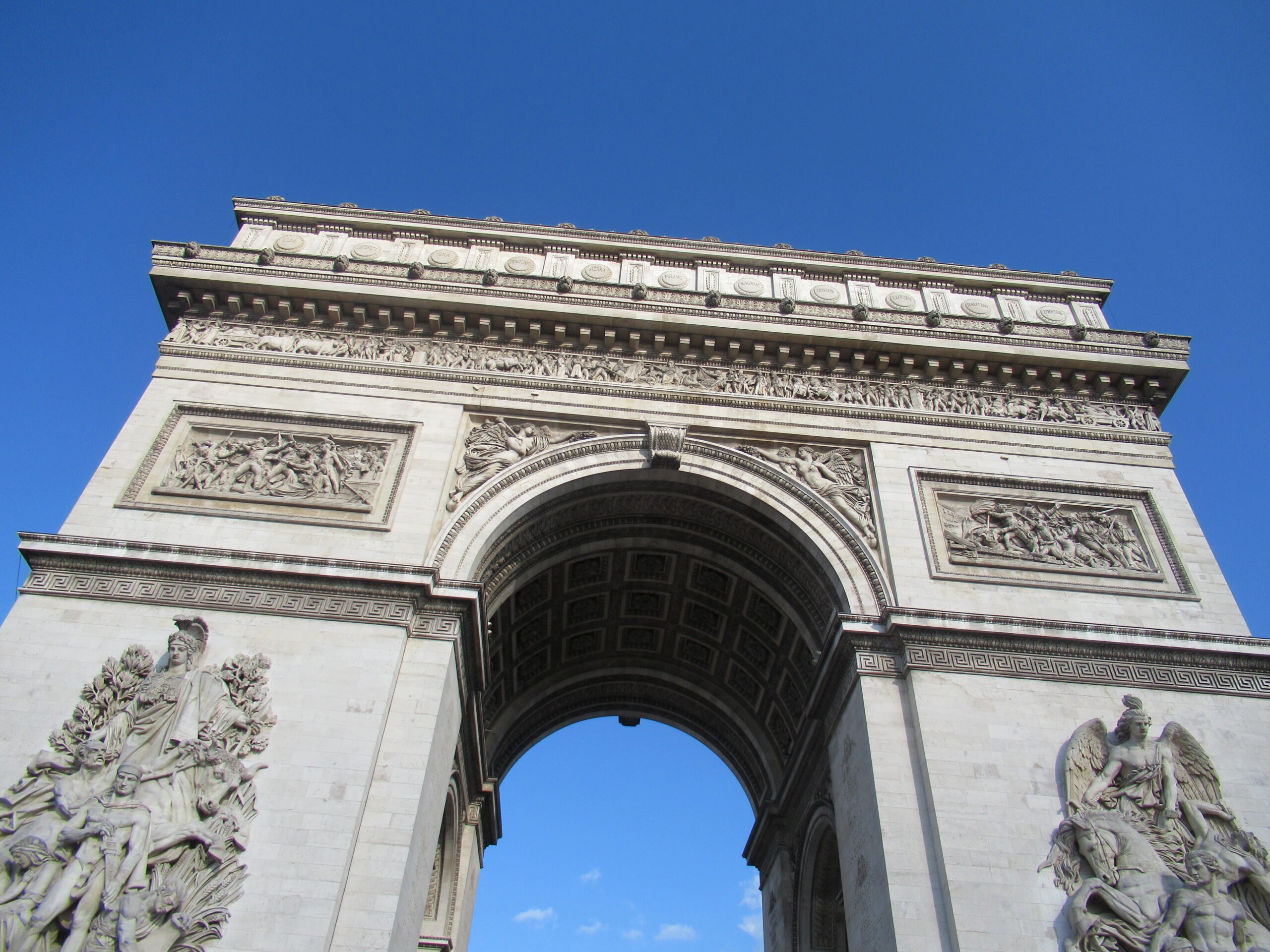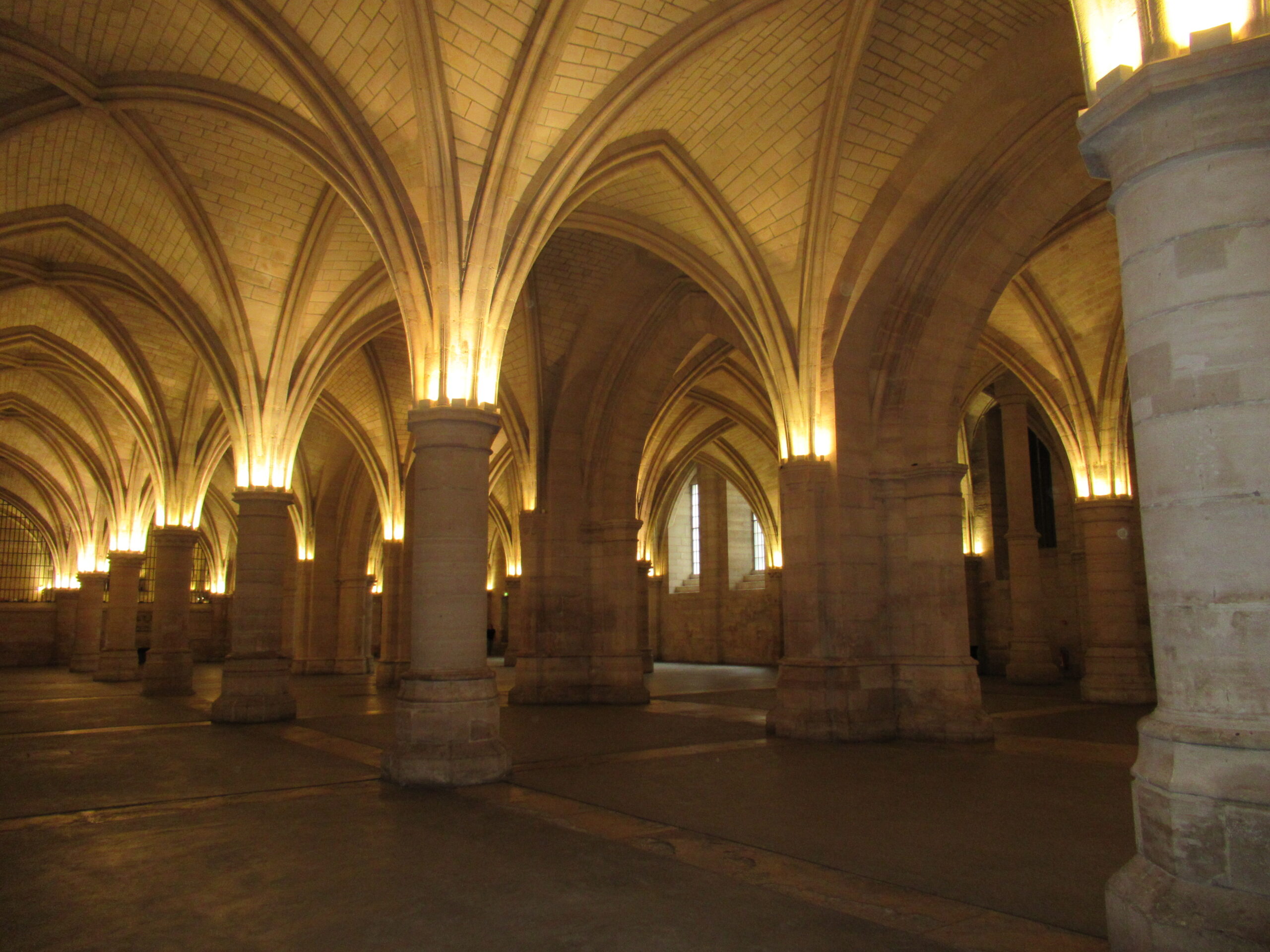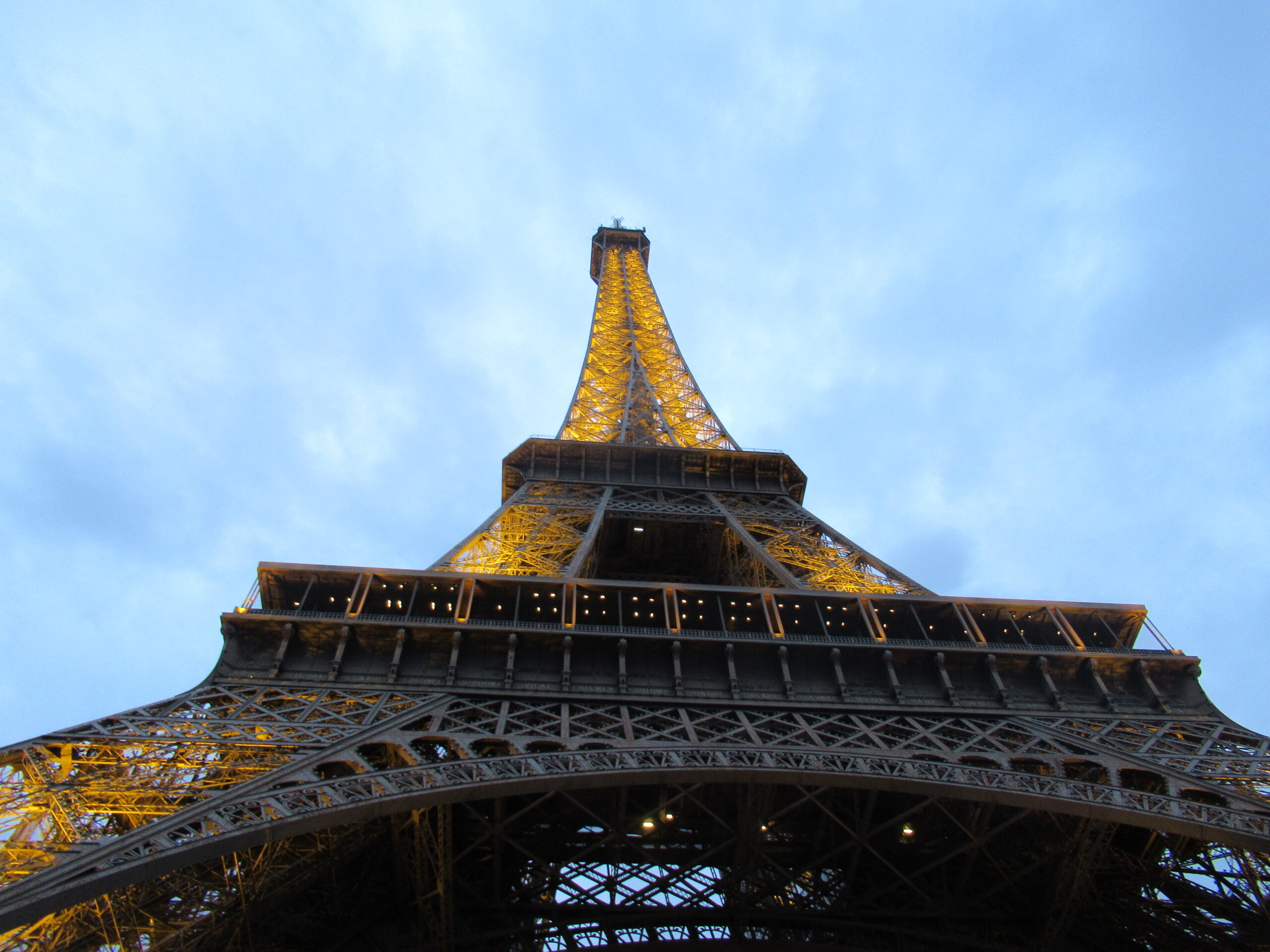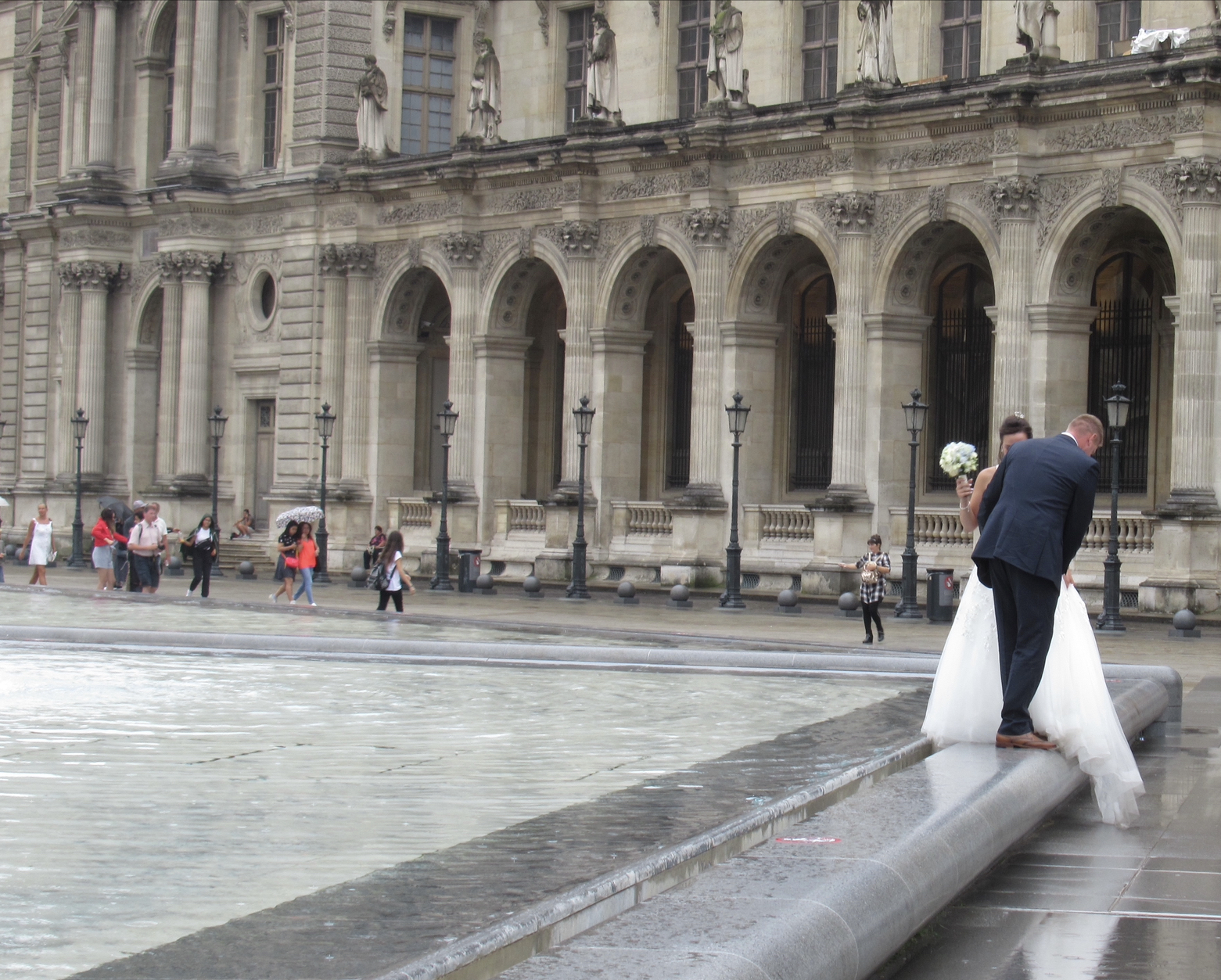Our collective first impression when we arrived at the Arc de Triomphe was of the huge traffic circle resembling a demolition derby surrounding the monument, with the difference that drivers were trying to avoid rather than crash into each other. And they were succeeding! As cars careened around, dodging in front of and around each other at breakneck speeds, we were in awe that we didn’t see even one fender-bender through all the chaos. To actually get to the arch, we descended into Metro tunnels that run under the traffic and came up on the island that contained the monument where we could walk around and under it.
Very big and majestic, as expected. It was the incredible artwork and historical references that I noticed most. There was a lot to see. The most memorable impressions for me were the solemnity of the tomb of the unknown, and a plaque commemorating Charles de Gaulle’s appeal to the French people, broadcast by radio June 18, 1940 after Nazi Germany’s invasion of France.
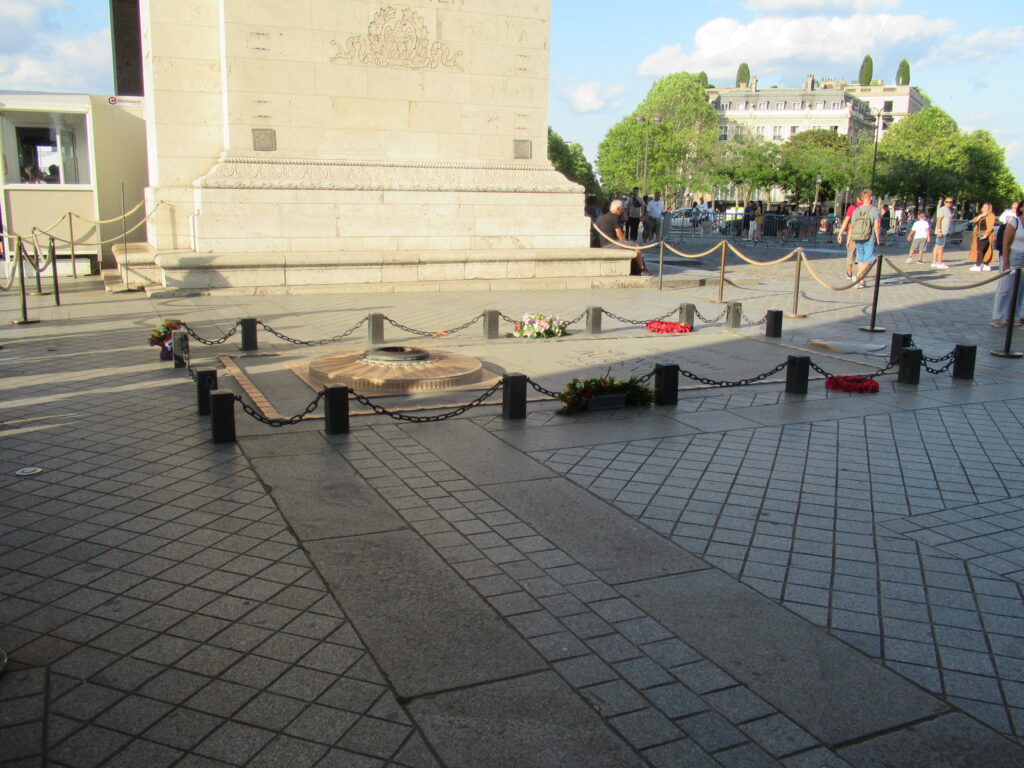
As I read it, I recalled a professor I had in college. She was from Paris, teaching French at the City University of New York in 1968. She sometimes talked about de Gaulle and the Second World War. Even we jaded New Yorker natives sensed an emotional foundation under her words. I recall she looked old enough to have had first hand experience of wartime France. I have a picture of her in my mind, standing at the front of the lecture hall, talking about de Gaulle in London, telling us how he was telling everyone “Je suis la France,” and nobody believed him, even though, she said, it was true. I thought of her as I read the words.
Les chefs qui, depuis de nombreuses années, sont à la tête des armées françaises, ont formé un gouvernement. Ce gouvernement, alléguant la défaite de nos armées, s’est mis en rapport avec l’ennemi pour cesser le combat.
Certes, nous avons été, nous sommes, submergés par la force mécanique, terrestre et aérienne, de l’ennemi.
Infiniment plus que leur nombre, ce sont les chars, les avions, la tactique des Allemands qui nous font reculer. Ce sont les chars, les avions, la tactique des Allemands qui ont surpris nos chefs au point de les amener là où ils en sont aujourd’hui.
Mais le dernier mot est-il dit? L’espérance doit-elle disparaître? La défaite est-elle définitive? Non!
Croyez-moi, moi qui vous parle en connaissance de cause et vous dis que rien n’est perdu pour la France. Les mêmes moyens qui nous ont vaincus peuvent faire venir un jour la victoire.
Car la France n’est pas seule! Elle n’est pas seule! Elle n’est pas seule! Elle a un vaste Empire derrière elle. Elle peut faire bloc avec l’Empire britannique qui tient la mer et continue la lutte. Elle peut, comme l’Angleterre, utiliser sans limites l’immense industrie des États-Unis.
Cette guerre n’est pas limitée au territoire malheureux de notre pays. Cette guerre n’est pas tranchée par la bataille de France. Cette guerre est une guerre mondiale. Toutes les fautes, tous les retards, toutes les souffrances, n’empêchent pas qu’il y a, dans l’univers, tous les moyens nécessaires pour écraser un jour nos ennemis. Foudroyés aujourd’hui par la force mécanique, nous pourrons vaincre dans l’avenir par une force mécanique supérieure. Le destin du monde est là.
Moi, Général de Gaulle, actuellement à Londres, j’invite les officiers et les soldats français qui se trouvent en territoire britannique ou qui viendraient à s’y trouver, avec leurs armes ou sans leurs armes, j’invite les ingénieurs et les ouvriers spécialistes des industries d’armement qui se trouvent en territoire britannique ou qui viendraient à s’y trouver, à se mettre en rapport avec moi.
Quoi qu’il arrive, la flamme de la résistance française ne doit pas s’éteindre et ne s’éteindra pas.
Demain, comme aujourd’hui, je parlerai à la Radio de Londres.
Such a powerful message! I translated as best I could for Husband, who got a little misty.
The great width of the Champs Elysées itself is extraordinary. In a previous world, it surely would have had a more distinctly French feel. Now, that feeling is punctured by signs of the global marketplace: Apple, BOSS, McDonald’s, Louis Vuitton. However, it is images of the panhandlers that stick with me from that walk.
Beggars and panhandlers are nothing out of the ordinary in large urban settings. In Paris, some are aggressive and come up to you and ask directly for money. I had already encountered those at Metro and bus stops in my travels around the city. They were pushy and invaded my personal space in a way that New York panhandlers do not. I’d move away, ending the encounter. In New York and Newark, I used to have extra change in my pockets just to give to these people. I once mentioned this to Betsy. She told me that a much more effective way of helping such people is to make donations to organizations that can use the money to assist them more efficiently than I could by giving 4-bit donations to random individuals. So that’s what I do now. I know the money will be put to good use and my skeptical friends are satisfied that I’m not being scammed on the street.
In Paris, most of the panhandlers looked like non-white non-Europeans. Along the Champs Elysées, they were mostly Arab. Some of them had signs made of the cardboard with little stories on them describing how they were Syrian and needed money to feed their children. Some of them sat up holding their signs in one hand, little paper cups in the other to receive money. But the women who prostrated themselves in the middle of the sidewalk next to their begging cups, face down with their arms stretched out in front of them, that was something different. Even if you think it’s all an act, you have to acknowledge the poignancy of it: Begging, face down, accepting whatever comes to you from whoever is passing by, not knowing how much or who until the end of your time on the ground.
All, incongruously, in the middle of one of the wealthiest streets in the world.
